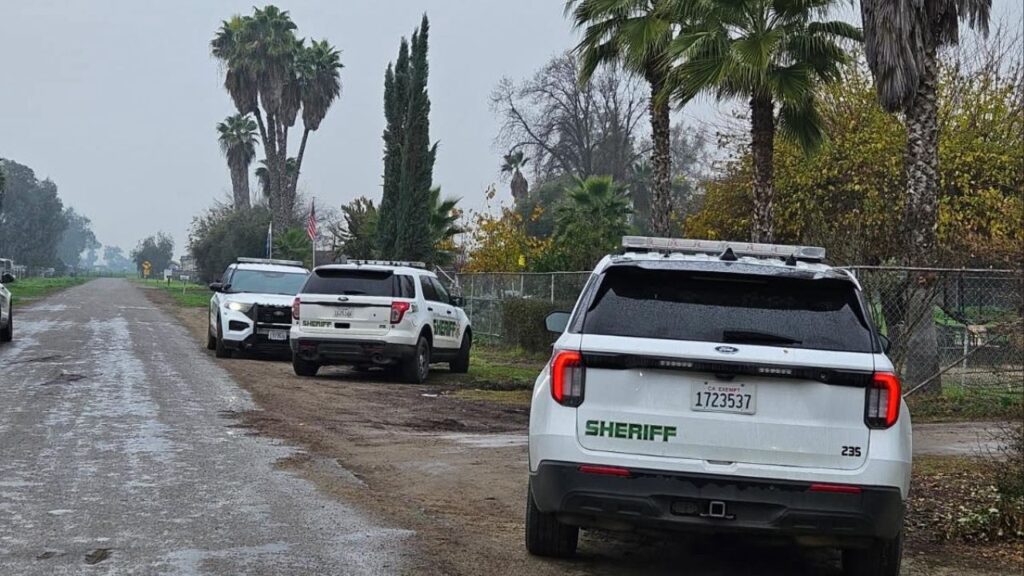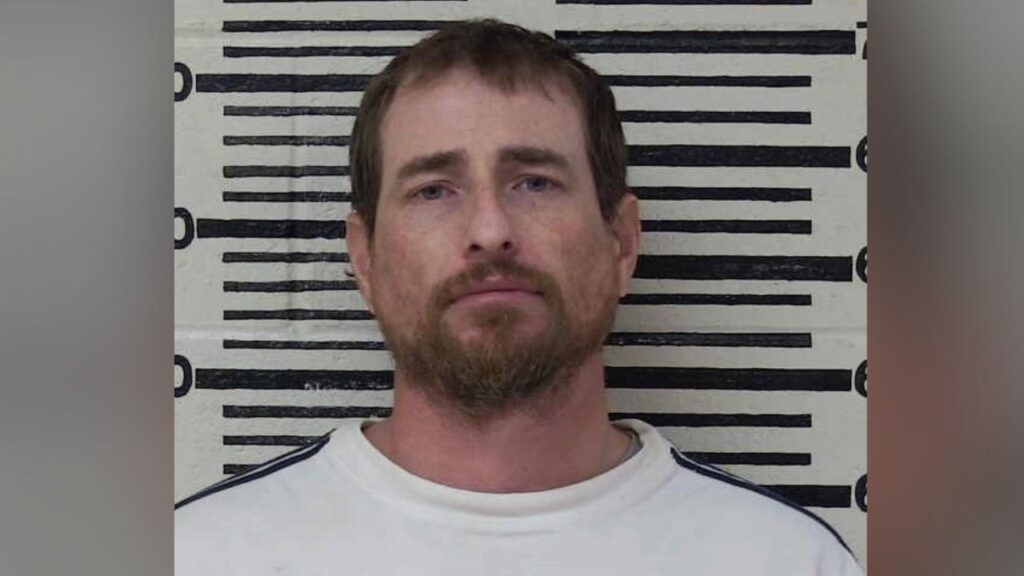A doctor shortage in the San Joaquin Valley drives many residents far out of the region for health care. That’s one reason California is developing a medical program at UC Merced. (CalMatters/CatchLight Local)

- The San Joaquin Valley has one of the lowest physician-to-patient ratios in California.
- The state is investing in a $300 million building for the UC Merced medical program.
- The program aims to attract and retain local students, encouraging them to practice in their hometowns.
Share
|
Getting your Trinity Audio player ready...
|
A hospital closure in the heart of the San Joaquin Valley a year and a half ago underscored something that people in the region have long known: They don’t have enough doctors or access to medical care.

Ana B. Ibarra
CalMatters
Madera County’s lone acute care hospital is expected to reopen later this year. But the issues around medical access that patients in this county and neighboring ones experience will likely continue long after Madera Community Hospital reopens.
People in this 250-mile region that spans eight counties often wait months for appointments or travel hours to the San Francisco Bay Area or Los Angeles for the care they can’t get at home. Attracting, retaining and producing doctors, and health workers is among the top needs in the Valley because it has one of the lowest physician-to-patient ratios in the state, according to estimates from the California Health Care Foundation.
Now, despite California’s staggering budget deficit, the state is moving forward with a long-term investment in luring more doctors to the San Joaquin Valley. It’s scaling up a medical education program at UC Merced, including breaking ground on a $300 million building for future students. The vast majority, $243 million, will come over the years from state funds; that’s the largest amount the state has ever put into a single construction project for the University of California system, according to the Legislative Analyst’s Office.
The four-story building will house a medical education program that selects students from the Valley to complete their undergraduate degree at UC Merced and continue on to medical school at UCSF-Fresno, a regional campus of UC San Francisco’s School of Medicine. The idea is for such a program to pave the way for a medical school.
“Centered on what happened in Madera, it became very apparent that access to health care must be a priority for leaders in our region,” said Assemblymember Esmeralda Soria, a Fresno Democrat who pointed to the Madera Community Hospital bankruptcy as she praised Gov. Gavin Newsom for maintaining funding for the UC Merced medical program despite the state budget deficit.
Valley leaders have been desperate to improve the area’s provider shortage; one program sponsored doctors from other countries to finish up their training in the U.S. in exchange for working in the Valley. But the long-term goal for this region has always been to build its very own public medical school. And some lawmakers think the Valley should actually have two.
(Editor’s note: While the state has struggled to find funding for a public medical school in the Valley, California Health Science University in Clovis has been training doctors through its College of Osteopathic Medicine. The accredited program graduated its first class in May. The university was founded in 2012 by GV Wire Publisher Darius Assemi and family members to provide a local option for medical school.)
Related Story: California Health Sciences University Celebrates Inaugural Doctors Graduation ...
While UCSF already trains doctors in the Valley via its Fresno satellite campus, experts have long said that a full-on medical school at UC Merced would bring more health professionals to the area and improve the overall health of residents. Lawmakers have floated the idea ever since the youngest UC opened its doors in 2005.
Fifteen students in the first cohort of this medical education program recently completed their first year at UC Merced.
“The ideal would be to look to the future to a medical school with a class of 50, so basically, four times what we have now,” said Dr. Lori Alving, director of UCSF-Fresno’s San Joaquin Valley Program in Medical Education, which was expanded to include an undergraduate component at UC Merced.
“If we had that, then we would see a medical school start to arise. And that would attract faculty, it would attract research, it would attract different kinds of industry, and it would attract doctors in the community who wanted to partner with a medical school.”
Related Story: UC Merced Receives Approval for $300 Million Medical Education Building ...
‘No Doctors Available’
The San Joaquin Valley, home to about 4.3 million people, is the heart of the state’s agriculture and oil industries. The area is also known for its bad air quality, high prevalence of chronic disease like diabetes and obesity, and insufficient medical providers.
The San Joaquin Valley has 47 primary care doctors for every 100,000 residents. By contrast, the San Francisco Bay Area has 80 primary care physicians for every 100,000 people, according to the California Health Care Foundation. When it comes to specialty care, 81 specialists per 100,000 people work in the Valley. The Bay Area has more than twice that.

“Some people’s visits (are) scheduled for more than a year in advance, simply because there are no doctors available to see them,” said Marcus Cummins, a recent graduate of UCSF-Fresno’s San Joaquin Valley Program in Medical Education.
Cummins, who grew up in Clovis, is now doing his residency at Community Regional Medical Center and the Fresno VA Medical Center. He recalls working in a primary care clinic as a third-year medical student and experiencing firsthand the difficulty of getting patients to the specialists they needed. In some cases, only one specialist served the entire Fresno area, he said.
“What I realized is that by the time that you’re referring somebody to a specialist, in theory, they’ve exceeded the capabilities of a primary care physician. They need specialty care, most of the time they need it relatively soon, but people here just simply aren’t able to get it,” he said. “Over that time that they’re waiting, they continue to experience the consequences of an untreated, unmanaged condition. And then things just kind of spiral. One condition leads to another.”
A doctor shortage means that providers there not only have to juggle more patients, but they also often see sicker and harder-to-treat patients, said Sara Bosse, the public health director for Madera County. After her local hospital closed, Bosse was concerned how that would affect already underserved communities.
“That patient population is low-income, they have other social determinant challenges with regards to transportation, health literacy, language barriers, higher levels of stress,” Bosse told CalMatters. “All of these factors make it harder for providers to provide care to that population. So in addition to having a lot more patients, those patients have these other challenges that take more time and energy of a provider to be able to provide quality care.”
Related Story: Is College Worth It? Poll Finds Only 36% of Americans Have Confidence in Higher ...
Valley Lawmaker Pitches Another UC Medical School
Establishing a medical school is a heavy lift and one that takes many years. Take UC Riverside, for example — it took about 40 years to open its school of medicine in 2013. Like the San Joaquin Valley, the Inland Empire, which includes Riverside, also has a significant physician and specialist gap.
Some lawmakers in the San Joaquin Valley don’t want to stop at Merced. Physician and Assemblymember Jasmeet Bains, a Delano Democrat, is carrying a bill that would create a fund for a future UC medical school in Kern County.
Her “Grow Our Own” bill does not call for a specific amount to be immediately allotted by the state, but it would allow for public and private contributions. Once certain funding requirements are met, the UC would have to build the medical school, after conducting a feasibility study.
“By recruiting, educating, and training the next generation of physicians locally,” Bains said in a recent legislative hearing, “The southern San Joaquin Valley can begin to erode the inequity of a decades-long doctor shortage that has contributed to the poor health outcomes of our residents.”
Bains also pointed to a 2019 study, published in the research journal Health Affairs, that found a 15-year drop in the number of medical students nationwide who hail from rural communities like those found in the San Joaquin Valley. Fewer than 5% of medical students are estimated to be from rural areas, and only about 0.5% of those are Black or Latino.
The Next Generation of Valley Doctors
Joslyn Conchas knows these disparities well. Conchas was always interested in medicine. As a child, she envisioned herself working on animal patients and less so on people. Looking back, she realizes this started to change because of her grandfather’s experiences. Doctor and hospital visits often came with long wait times, and were then complicated because he didn’t speak English and his providers didn’t speak Spanish. Conchas or another relative would have to accompany him to translate.
Witnessing “all of these health disparities that were being shown within my own family and seeing how prevalent they are in others as well, I think that’s what motivated me to pursue a career in medicine,” Conchas said.
Conchas, who grew up in Fresno, is the quintessential example of what health leaders and lawmakers in the San Joaquin Valley say is needed to help alleviate the area’s crippling physician shortage: students with Valley roots, looking to stay and practice near their hometowns.
Conchas is part of the first cohort of students in the new medical education program at UC Merced that just wrapped up its first year of undergraduate studies.
As mapped out in her curriculum, once she graduates from UC Merced in 2027, she will pursue medical school at UCSF’s regional campus in Fresno.
A big bonus for her? Getting to stay close to home as she navigates undergrad and medical school to become the first doctor in her family.
Supported by the California Health Care Foundation (CHCF), which works to ensure that people have access to the care they need, when they need it, at a price they can afford. Visit www.chcf.org to learn more.
About the Author
Ana B. Ibarra covers health care for CalMatters. Her reporting largely focuses on issues around access to care and affordability.
About the CalMatters
CalMatters is a nonprofit, nonpartisan newsroom committed to explaining California policy and politics.
RELATED TOPICS:
Categories



















